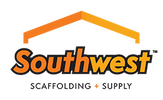Rent, Buy, or Lease? What You Should Own vs. What You Should Rent
In construction equipment is money. Not just the cost of buying it, but also the cost of maintaining it, storing it,making sure it earns its keep. The big question every contractor eventually faces is: should you rent, buy, or lease? The answer isn’t one-size-fits-all, it depends on the equipment, your workload, and your cash flow. Let’s break it down.
Scaffolding: Own the Basics, Rent the Specialty
If scaffolding is part of your everyday work, buying makes sense. Frame scaffolding, accessories, and planks pay for themselves quickly if you’re setting them up on most jobs.
Buy: Standard frames, braces, planks, base plates.
Rent: Large system scaffolding, suspended scaffolds, or specialty setups you don’t use often.
Lease: Useful if you’re growing quickly and want to spread out payments while keeping capital free.
Owning your core scaffolding means you’re always ready to mobilize. Renting specialty pieces lets you take on unusual projects without carrying the overhead year-round.
Lifts: Rent More Than You Own
Scissor lifts, boom lifts, and telehandlers are essential—but not always every day. These machines are expensive to buy, require maintenance, and can sit idle between jobs.
Buy: Only if you’re using a particular lift every week and have the storage space.
Rent: For short-term projects, one-offs, or to scale up when you need multiple machines at once.
Lease: A middle ground if you consistently need a lift but can’t justify full ownership costs.
For most contractors, renting is the smarter play. You get the right size lift for each job without committing long-term.
Tools: Own What You Touch Daily
Hand tools and most power tools are no-brainers—own them. They’re relatively inexpensive compared to the value they provide, and you’ll always need them.
Buy: Everyday tools—saws, drills, levels, trowels, grinders.
Rent: Specialty or high-cost tools you use once in a while (like core drills or large demo hammers).
Lease: Rare for tools, but sometimes worth it for high-ticket items like generators or compressors.
Rule of thumb: if you use it once a week, own it. If you use it once a year, rent it.
Trucks & Vehicles: Think Long-Term Costs
A truck isn’t just a vehicle—it’s your rolling office and equipment hauler. But trucks also depreciate quickly and cost a lot to maintain.
Buy: If you’ll keep it for years and maintain it well, buying is usually the most cost-effective.
Lease: If you prefer newer trucks, lower maintenance risk, and predictable monthly payments.
Rent: Only makes sense for a short-term need (extra hauling capacity, short project out of state).
A solid work truck that you own outright is often a contractor’s best friend. Leasing makes sense if image matters (for client-facing roles) or if downtime would cost you more than the monthly lease.
The Smart Mix
The most successful contractors strike a balance:
Own your core gear (scaffolding, everyday tools, dependable truck).
Rent specialty items (unique lifts, system scaffolding, or rarely used tools).
Lease when growth demands flexibility (fleet expansion, spreading out big costs).
Think of it this way: if it’s working for you most days, it should probably be yours. If not, let someone else store and maintain it until you need it.
Final Word
At Southwest Scaffolding, we’ve seen both sides, contractors weighed down by too much idle equipment and contractors losing jobs because they didn’t have what they needed. The key is knowing when to own and when to borrow. A smart mix keeps you competitive, profitable, and ready for any project that comes your way. Have a look at our construction equipment on our main page
Recent Posts
-
Cold-Weather Scaffolding: When Winter Changes the Rules
Although Texas—home to Southwest Scaffolding’s headquarters—hasn’t experienced much of a winter this …Jan 6th 2026 -
What’s Ahead for Construction in 2026 — What Every Contractor & Scaffolding Pros Needs to Know
As we head into 2026, the construction industry is at a pivotal moment — shaped by technology, labor …Dec 31st 2025 -
What Happens When Scaffolding Is Installed Incorrectly
Lessons Learned (Without Naming Names) Scaffolding is one of those things most people don’t think ab …Dec 31st 2025




